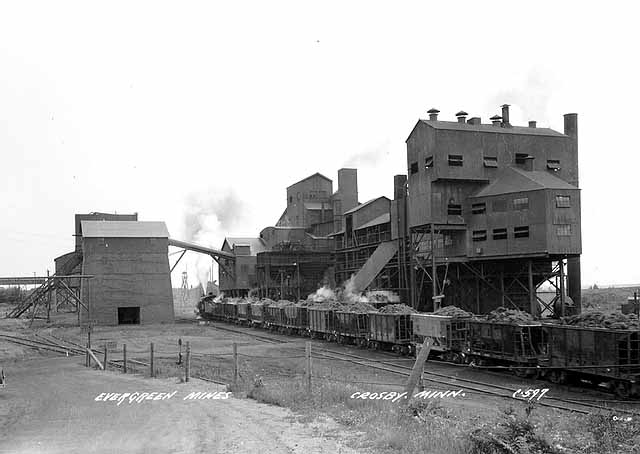The Portsmouth Sintering Plant 1924-1966 - Fred Sutherland "Almost everything is a dull rusty red. This is the color of the railroad ties, of the soil, of the stockpiles, and even the buildings of the mines. The landscape has a blasted and forlorn look, even though most of the mines are operating, somehow (it) always seems lifeless and desolate." - George F. Brighten, 1941 I'm pleased to feature a guest post detailing a ghost plant in the Cuyuna Range of Minnesota, written by my colleague Fred Sutherland, a recent graduate from the Industrial Heritage and Archaeology Program at Michigan Tech. Fred's dissertation, "The Cuyuna Iron Range: Legacy Of A 20th-Century Industrial Community" explores the industrial history of the Cuyuna Range, through the lens of Industrial Archaeology. Enjoy JB! At a site about 100 miles south of the Mesabi Iron Range on the Cuyuna Iron Range an unusual ore refinement process was conducted during the mid-20th century. It was unusual because it was the only example of its type in the Great Lakes region and also for its scale, as the largest of its kind in the United States while it was in operation. The Portsmouth Sintering Plant operated for 42 years, even for 8 years after its local mine closed, because it processed the unmarketable portion of fine-grained iron ores found across the Cuyuna Range into a marketable product called sinter.
3 Comments
|
AuthorJohn Baeten holds a PhD in Industrial Heritage and Archaeology from Michigan Technological University. His research aims to contextualize the environmental legacies of industrialization as meaningful cultural heritage. Archives
May 2016
Categories
All
|

 RSS Feed
RSS Feed
